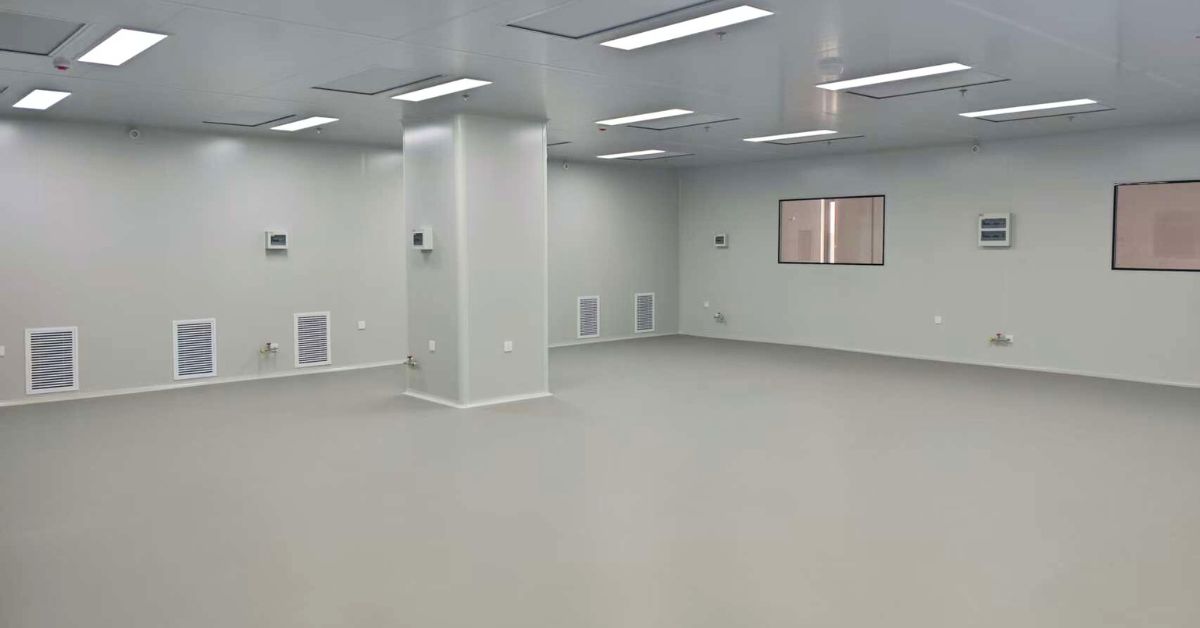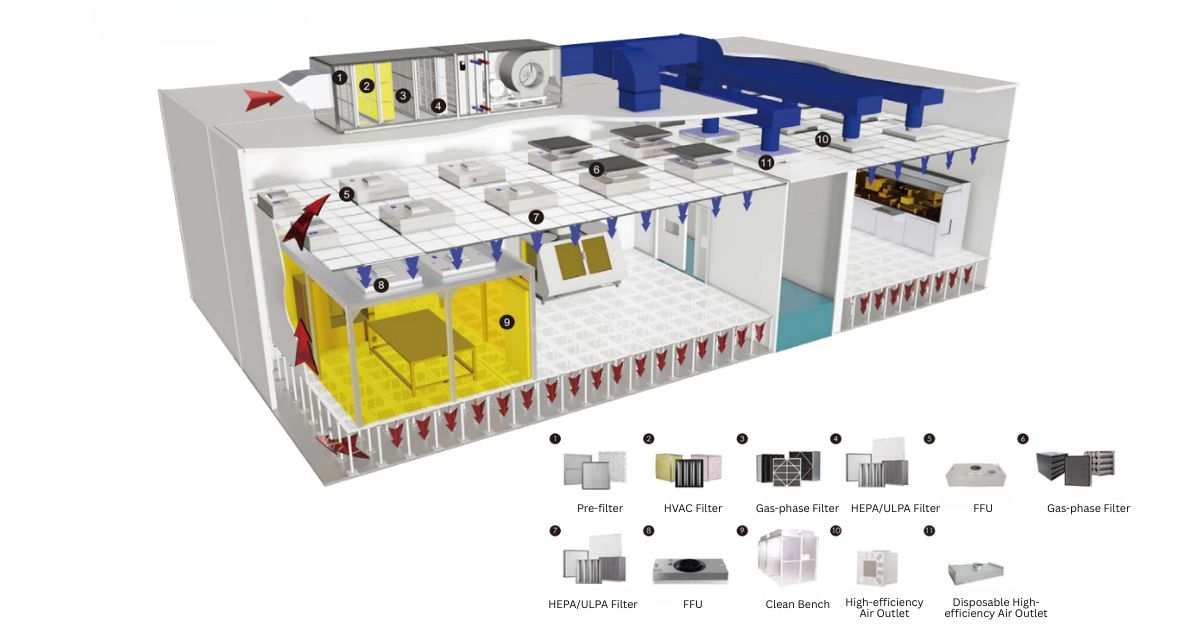For the cleanroom, the key operational elements is the air filter. Through the cooperation of HEPA filters, pre-filters, Fan Filter Units (FFUs), and high-efficiency air supply outlets, cleanrooms continuously provide clean air to ensure that production and experimental activities can proceed normally. However, over time, the efficiency of air filters gradually decreases. Inefficient air filters not only increase energy consumption but also affect product yield and experimental results. Therefore, regularly replacing air filters in cleanrooms is crucial. But when should filters be replaced? How do you replace them?

Pre-Filters
Pre-filters are typically placed at the air intake of air conditioning units to capture large particles. They effectively protect the subsequent high-efficiency filters, extending their lifespan and reducing energy consumption. Common types of pre-filters include panel filters and metal filters.
Medium-Efficiency Air Filters
Medium-efficiency filters are generally situated between pre-filters and HEPA filters to filter smaller particles comtamination. Their function is similar to pre-filters, as they help extend the lifespan of HEPA filters and lower cleanroom energy consumption. Common types of medium-efficiency filters include panel filters, bag filters, and V-bank filters.
HEPA Air Filters
HEPA filters are the most important components in cleanroom operations, with a filtration efficiency greater than 99.95% (at MPPS). They can capture common contaminants such as viruses, bacteria, pollen, and PM2.5, effectively elevating the cleanroom environment to the required standards.
Carbon Fiber Air Filters
In specific occassions, carbon finer filters may be installed to filter molecular contaminants, odors, volatile organic compounds (VOCs), toxic and harmful gases, and corrosive gases.
When design the cleanroom air filtration system, technicians will combine different filters based on the client's actual needs and specific scenarios. For example, the following diagram illustrates an air solution for a semiconductor cleanroom.

The replacement frequency varies among air filters with different efficiencies. As a filter manufacturer, we recommend the following to our clients:
Pre-Filters( 2-4 months) Medium-Efficiency Air Filters( 6 months) HEPA/ULPA Air Filters( 12-24 months)
Requirements for air filters are different fordifferent industries, so replacement frequencies may vary. How can we determine when an air filter needs to be replaced? We can assess it from two perspectives:
1. Resistance Testing: Manufacturers typically will provide the initial resistance of the air filters. If the final resistance is greater than or equal to twice the initial resistance, the filter should be replaced; otherwise, it could affect the normal operation of the unit and increase energy consumption.
2. Environmental Quality Monitoring: Cleanrooms usually come equipped with electronic controller to monitor and adjust indoor air quality. If the air cleanliness remains at an abnormal level, we need to consider the possibility of filter leaks.
To replace cleanroom air filters, simply provide the filter type, filtration efficiency, size, and airflow requirements of the filters based on the original design to your supplier. However, if you have new requirements (such as adding odor removal capabilities), please contact the professional technicians to devise a specific air filtration solution.
The rapid expansion of the Electric Vehicle (EV)
In-depth analysis of air filter selection standa
From semiconductor manufacturing to pharmaceutic
Contact: +1(213)786-4191
Phone: +1(213)786-4191
Tel: +1(213)786-4191
Email: Info@amorairglobal.com
Add: 1476 W 9th St Upland, CA, United States 91786